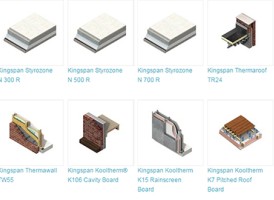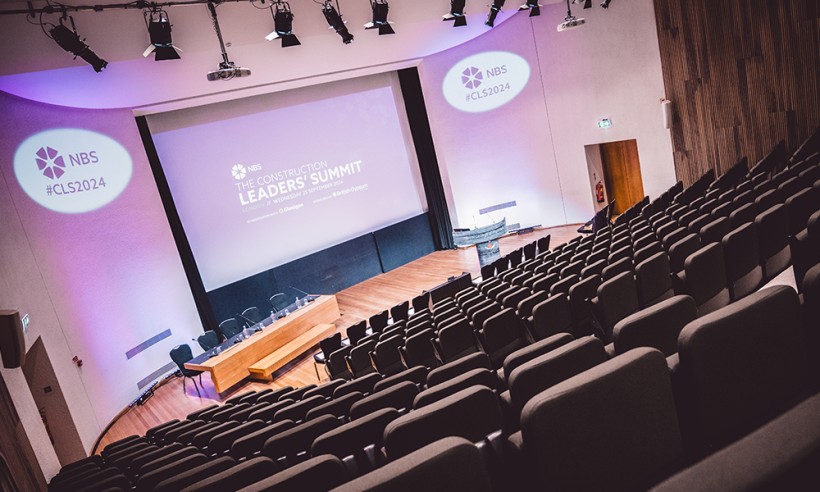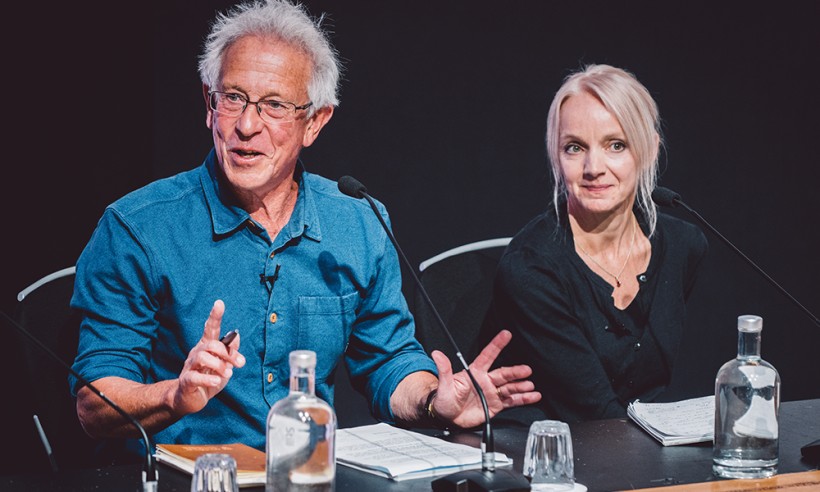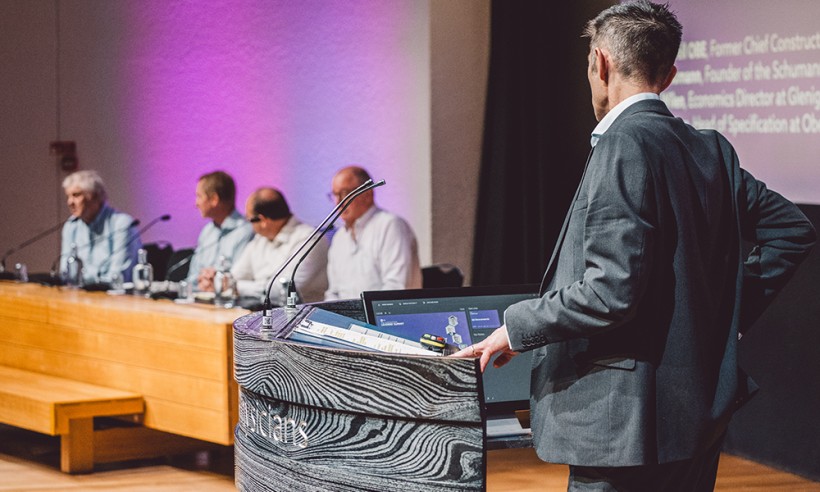
A manufacturer's guide to BIM object creation
03 January 2017
The construction industry is increasingly looking to product manufacturers to provide high qualit...
31 October 2024 | By NBS
Revisit the Construction Leader’s Summit 2024 event and get up to date with the industry’s key events in this NBS recap.

The Construction Leader’s Summit 2024 returned to London for its fourth event on the 25th September 2024. Over 250 construction industry professionals attended the event, with some of the country’s most notable architects and manufacturers turning up to delve into the most important topics affecting our industry.
In this article, we’ll recap the event to share some of the most pressing topics facing construction leaders. In each section, we’ll provide key takeaways to give you an at-a-glance overview. If you’re more of a visual learner, you can now watch some of the presentations from CLS 2024.
The first topic covered was building safety with a keynote speech from Paul Morrell OBE, Former Chief Construction Adviser to the UK Government, CIOB Client Champion. As a pivotal figure in the formation of the Building Safety Act, Paul made it clear that the collaboration between UK construction professionals is crucial to success and safe building.
Paul praised the Grenfell Phase 2 report for its thoroughness and reminded construction professionals that we must all understand the nature of competence when assigning tasks in a chain.
“How do we pass duties down through the chain so the thing we finish up with is safe?”
Paul used the Grenfell example to illustrate his point further, making it clear that an attitude of passing responsibility down the chain is entirely unacceptable and largely contributed to the Grenfell disaster.
“The lesson here isn’t ‘didn’t [the architect] do badly. The lesson is that isn’t it shameful that someone was put into a job they were not trained or qualified to do and left to get on with it.”
He stressed the need to work collaboratively, as a building is part of a chain of connected duties. A traditional attitude leads to a “merry-go-round of buck-passing", ultimately leading to unsafe buildings.
In addition to better collaboration during projects, the UK needs better testing standards. Our current product testing standards come from EU regulations, we must either engage with the EU in improving and expanding these or develop a better way.
Following Paul’s speech, NBS held a panel session focused on The Building Safety Act. This discussion focused on how design and build procurement can be set up to work as efficiently as possible whilst ensuring safety. Manufacturers play an important role in this, with Dan Norman stating:
“As manufacturers, we need to be more transparent.[...] In terms of testing the capabilities of our products and how we test them.”

The next topic for the day was sustainability, and we began with an incredible keynote address by Chris Hines, MBE. Chris was complimentary about the construction industry, noting our sector's impact on people’s lives by providing places to live and work.
Chris’s presentation focused on Surfers Against Sewage, a campaign which was instrumental in changing water regulations and improving marine conservation efforts across the UK. This campaign was only made possible through the collaborative efforts of individuals, which is a point all construction professionals need to take on board.
The keynote urged us to consider the role of construction in climate change, with a sobering statement that likened the climate crisis to the Grenfell disaster:
“The climate crisis is like a chronic version of what happened at Grenfell. There are people dying right now because of buildings we design. The buildings that we build and that we make profit from. That is a harsh reality and we won’t see those buildings, we won’t put names or faces to them but somewhere around the world, there are people who are being that heavily impacted.”
Chris then made it clear that it’s not about doom and gloom but instead about practical efforts that can make a change. The industry needs to move away from solely looking at profits. Decisions should rely on facts and experts, with science backing every choice. All of this is reinforced by the idea of the ‘triple bottom line’ – which is about considering a project in terms of People, Planet & Profit.
“It’s not that you don’t need to make money, it’s just that you need to take people and the planet into account at the same time.” “With all of the technology, skill, passion, and changes, we are going to drive through to a positive future. [...] We can absolutely do this and we must do this.”
Following Chris’ presentation, a sustainability panel explored the concept of the green thread. Like the ‘Golden thread’ in the Building Safety Act, this thread would provide a clear track of sustainability aspirations from start to finish.
Towards the end of the panel, an audience member asked whether buyers demand sustainable credentials. In some ways, this question encapsulates some industry attitudes towards sustainable construction, with many viewing it as a burden imposed by regulation.
Buyers, however, do not share that attitude – the panel explained how sustainable design is actually a core consideration for most of us:
“Over 50% thought they were in the minority. This kind of perception gap, most people want these solutions to come forward and they want you as an industry to be delivering those solution, built-in. But we all think because of social media and divisions [...] that we don’t all believe this, but we do generally believe this is the way forward.”

The next topic up for discussion was the role of specification in supporting better safety and sustainability standards. Dr Stephen Hamil shared key updates to NBS Chorus and NBS Source that have helped make specifiers’ lives easier:
A panel discussion following Stephen’s presentation focused on the challenges of working on design and build projects, particularly with deciding who is best positioned to act as the Principal Designer throughout each project stage. Panel members also discussed the challenge of obtaining suitable test data from manufacturers for systems and products.
Ultimately, specifications need to act as the most comprehensive source of project information – starting with an accurate record of performance requirements.
“What is essential is we also need to demonstrate how we meet performance requirements. With prescriptive specifications sometimes you lose that performance requirement which was set in the beginning. It’s essential, irrespective of descriptive or prescriptive specifications, to have an accurate record of what the actual project performance requirements are. Then you can actually demonstrate that system selection meets those requirements.”

The final keynote address was delivered by Karen Burns, CEO and Co-Founder of Fyma. It focused on the role of Artificial Intelligence and how it will shape new approaches within construction.
Karen discussed the evolution of AI and Machine Learning and shared how it can be used to perform powerful predictive analysis, with applications such as helping property managers plan preventative maintenance. To achieve this, however, AI relies on good-quality data, which can be an issue in the construction sector.
“The potential is there and it is vast, but the data is often not there. [...] AI won’t work unless you train it with really good quality data.”
For construction businesses to better harness AI, we must improve approaches to data collection and handling. Attitudes are changing and AI adoption rates are now ramping up. Only 12% of construction companies used AI in 2020, but 24% will use it by 2025.
The US is currently the world leader in AI adoption, but the UK and Germany are pioneering the use of AI in modular construction and predictive maintenance in buildings. The presentation also showed that just 5% of construction companies would say they were on the cutting edge of AI adoption – so it’s clear our industry is behind the curve.
The panel discussion following Karen’s talk reinforced the idea that our industry needs to change, but there are lots of barriers and hurdles to overcome.
“People who have a passion for improving things, whether sustainability or safety, need to engage with these tools. They’re not going away. They’re only going to keep advancing. We need passionate people who want to use them for good to be aware of what’s happening as this technology develops. [...] Whatever your problem is, there are ways this can make your life more efficient, more optimised and present different approaches to creative problem solving. It’s all there, it’s just about engaging.”

As we come to the close of another amazing event, we thank all the sponsors who made it possible.
A big thanks to British Gypsum, Obex, Dulux, Bauder and Hi-Macs. One of the sponsors, Dulux, took centre stage by bringing along the star of the show, Vienna. She is one of a long line of pedigree breeds that have made the ‘Dulux Dog’ famous and all attendees report she was a pawsome addition.
If you want to see more of the CLS, watch some of the full presentations.